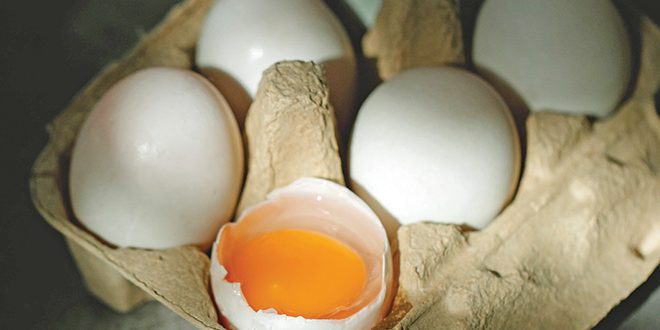ABOVE: Conventional cage eggs have the least risk of being impacted by disease. Photo: Klaus Nielsen
In July 2023, a joint meeting of the federal and all state agriculture ministers is expected to endorse an updated version of the Australian Animal Welfare Standards and Guidelines for Poultry.
This document applies to all industries that work with poultry – including Australian egg farmers and poultry meat producers.
The revised document follows recommendations from a recent review into such standards by a three-member panel, appointed by the government.
The process is referred to as the ‘S and G’.
The work to update a new S and G for the nation’s poultry and egg industries has taken over 11 years to reach this point.
What is S and G?
The Australian Animal Welfare Standards and Guidelines for Poultry govern the way hens should be cared for on egg and poultry-meat farms.
Similar Animal Welfare Standards and Guidelines apply to other intensive livestock industries in Australia, such as cattle and sheep.
According to the federal Department of Agriculture, Fisheries and Forestry: “The poultry standards aim to harmonise national animal welfare legislation, providing clarity and consistency to industry, consumers and trading partners” on the welfare of hens.
Visit animalwelfarestandards.net.au for the official S and G website.
How have egg farmers been involved in the review process?
Initial consultation about the need to update the Standards and Guidelines for the poultry sector started 11 years ago.
From the first meetings in 2012, Australia’s commercial egg farmers have continued to work through this process at a national level.
After a 10-year delay, the current proposed S and G guidelines were released for consideration in August 2022.
This followed a review by a three-member panel appointed by the government, which conducted a series of public and industry hearings around the country.
The panel included:
- Chair Renata Brooks – a former vet and animal welfare manager with the NSW State Government
- Professor Andrew Fisher – a vet and director of the Animal Welfare Science Centre at the University of Melbourne
- Mark Townend – former chief executive officer of RSPCA Queensland.
To view the panel’s recommendations and proposed updated S and G document that has been presented to the federal and state agriculture ministers for sign-off, visit agriculture.gov.au/agriculture-land/animal/welfare/standards-guidelines/poultry

Dr Rod Jenner said Australia’s cage egg production was far more ethical today than 15 years ago and modern hens were healthy and thriving.
Important note
It should be noted that the term ‘battery hen’ or ‘battery cages’ is incorrect and misleading.
Australian egg farmers no longer use single cages for hens.
This practice was stamped out in 2008.
The ABC and its national consumer reporters, senior editors and investigative reporters continue to incorrectly report this term – despite repeatedly being corrected.
Australian poultry vet and researcher Dr Rod Jenner said Australia’s cage egg production was far more ethical today than 15 years ago and modern hens were healthy and thriving.
Visit eggfarmersaustralia.org/wp-content/uploads/2021/07/8.7.21-MEDIA-RELEASE-ABC-MISUSE-TERM-BATTERYHEN.pdf for more information on this outdated term.
Currently, there are three forms of commercial egg production in Australia – free range, barn laid and conventional cage eggs.
Egg farmers position on conventional cage eggs
Egg Farmers of Australia is the national body that represents the nation’s commercial free range, barn laid and conventional cage egg farmers.
In its submission to the S and G review, EFA took the view, that over time, conventional cages should be phased out in Australia – but not before 2046.
The year 2046 was based on the amount of time it would take to ‘pay off’ bank loans used previously to finance such conventional cage facilities, equipment and other requirements linked to this form of egg business.

Leaving conventional cages in place until 2046 would ensure long-term egg industry employment and food security for all Aussie families. Photo: Valeriya Kobzar
Why commercial cage egg farmers would seek compensation?
In difference to this, the updated proposed S and G document suggested conventional cages should be phased out 10 years earlier, by 2036.
Commercial egg farmers warned that if the federal or state governments wanted conventional cages phased out by 2036, egg farmers would need structural adjustment packages paid to them by their relevant state government to compensate for either their exit from the industry or to allow them to make an early transition into other egg production methods, such a free range or barn laid.
EFA has previously warned the review panel that if conventional egg farmers are forced out of the egg industry prior to 2046, Australian consumers could experience a shortage of egg supplies on store shelves.
This is because currently, conventional cage eggs make up the highest volume of overall egg sales in Australia and account for 33 percent of eggs sold in supermarkets.
What would happen if ag ministers phased out conventional cage eggs earlier than 2046?
Such a decision would result in future egg shortages, impacting on Australian consumers.
If one method of egg production was prematurely removed from the market, there would be less eggs available to Aussie families.
The cost of eggs – which are currently one of the most affordable sources of protein – would rise dramatically.
Further, conventional cage eggs have the least risk of being impacted by disease, such as avian influenza, when compared to free range or barn laid hens, which can be left exposed to wild birds or potential AI carriers.
The UK, US and New Zealand all experienced eggs shortages and higher prices when disease outbreaks impacted their laying flocks.
That’s why commercial eggs farmers urge the federal and state agriculture ministers to make a sensible decision on the S and G conventional caged egg clause.
By leaving conventional cages in place until 2046, they would ensure long-term egg industry employment and food security for all Aussie families.
Egg farmers would then have time to pay off their conventional cage debts and transition into other egg production methods.

